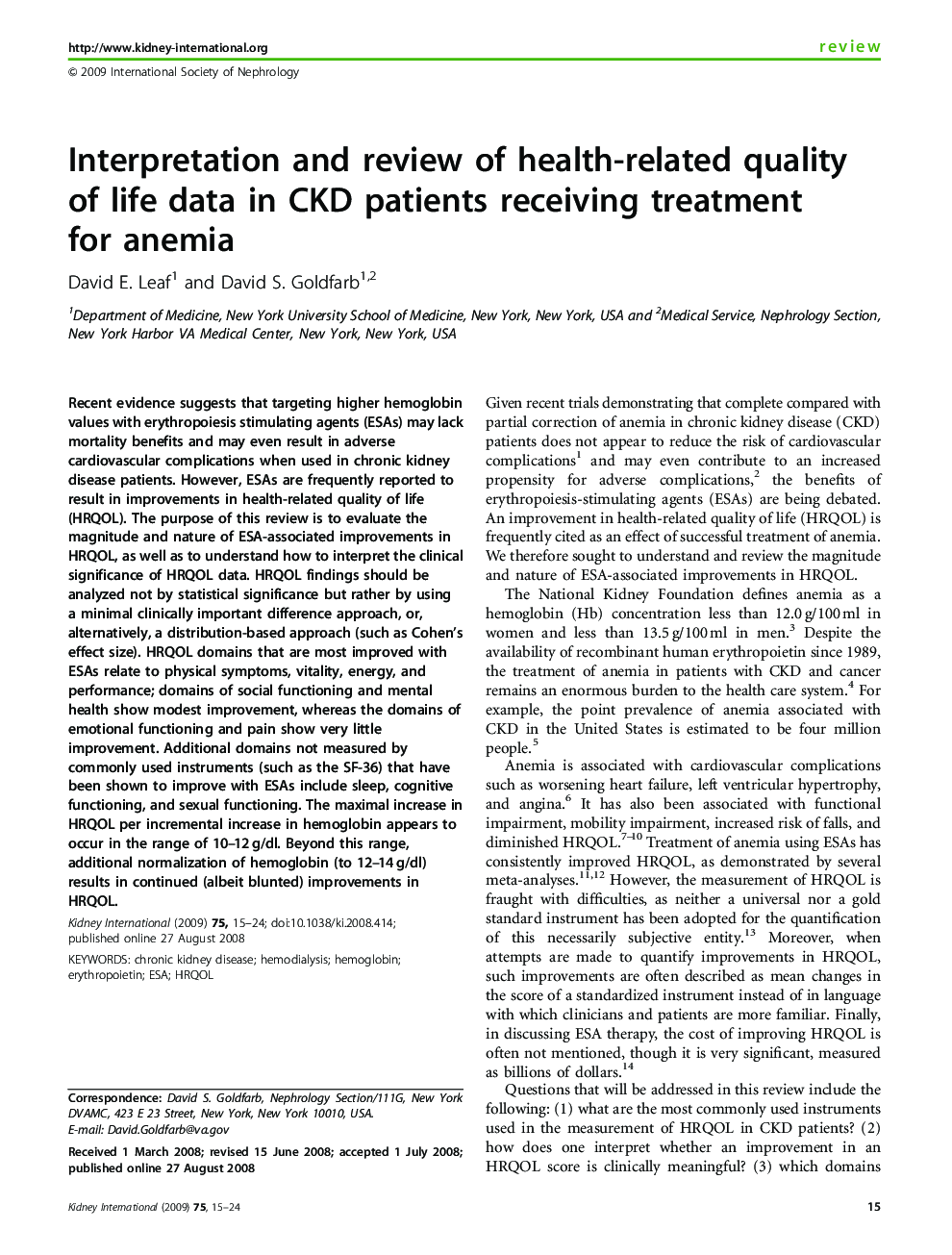| Article ID | Journal | Published Year | Pages | File Type |
|---|---|---|---|---|
| 3884079 | Kidney International | 2009 | 10 Pages |
Recent evidence suggests that targeting higher hemoglobin values with erythropoiesis stimulating agents (ESAs) may lack mortality benefits and may even result in adverse cardiovascular complications when used in chronic kidney disease patients. However, ESAs are frequently reported to result in improvements in health-related quality of life (HRQOL). The purpose of this review is to evaluate the magnitude and nature of ESA-associated improvements in HRQOL, as well as to understand how to interpret the clinical significance of HRQOL data. HRQOL findings should be analyzed not by statistical significance but rather by using a minimal clinically important difference approach, or, alternatively, a distribution-based approach (such as Cohen's effect size). HRQOL domains that are most improved with ESAs relate to physical symptoms, vitality, energy, and performance; domains of social functioning and mental health show modest improvement, whereas the domains of emotional functioning and pain show very little improvement. Additional domains not measured by commonly used instruments (such as the SF-36) that have been shown to improve with ESAs include sleep, cognitive functioning, and sexual functioning. The maximal increase in HRQOL per incremental increase in hemoglobin appears to occur in the range of 10–12 g/dl. Beyond this range, additional normalization of hemoglobin (to 12–14 g/dl) results in continued (albeit blunted) improvements in HRQOL.
